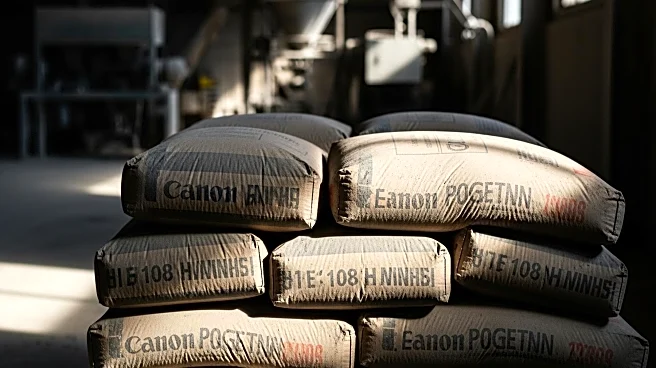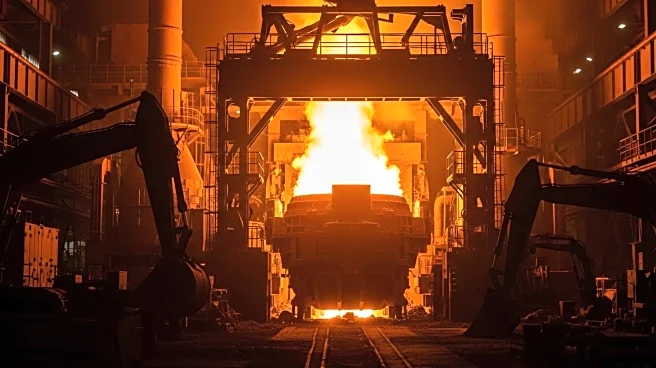What's Happening?
The UK's cement production has reached its lowest level since 1950, according to the Mineral Products Association. This decline is attributed to high energy, regulatory, and labor costs, which have reduced the sector's competitiveness. The UK produced 7.3 million tonnes of cement in 2024, about half of its 1990 output. The drop in production poses risks to the UK's infrastructure and housebuilding targets, as cement is a crucial component in construction. The increase in cement imports, which have nearly tripled over the past 20 years, further exposes supply chains to international market volatility.
Why It's Important?
The decline in UK cement production has significant implications for the construction industry, both domestically and internationally. For the U.S., which imports construction materials, this trend could lead to increased reliance on imports, potentially affecting supply chain stability and costs. The situation underscores the importance of domestic production capabilities and the need for policy measures to support local industries. The U.S. construction sector may need to consider diversifying its supply sources to mitigate risks associated with international market fluctuations.
What's Next?
The UK government and industry stakeholders are likely to push for policy interventions to support domestic cement production, such as addressing high electricity prices and implementing a robust Carbon Border Adjustment Mechanism. For the U.S., monitoring these developments will be crucial, as changes in UK policy could impact global cement supply dynamics. U.S. construction companies may also explore alternative materials or technologies to reduce dependency on imported cement.













